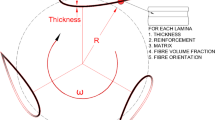Abstract
An automatic design environment using evolutionary techniques has been developed for the design of Horizontal Axis Wind Turbine (HAWT) blades taking into account both the aerodynamics and the structural constraints of the blades. This design environment is based on a simple, fast, and robust aerodynamic simulator intended for the prediction of the performance of any turbine blade produced as an intermediate individual of the evolutionary search process. In order to reduce the computational costs, the results obtained by this simple simulator have been corrected through the application of Artificial Neural Network (ANN) based approximations. An additional stress analysis stage has been introduced in order to take into account the structural resistance of the blades as a constraint throughout the optimization process. Results of the simulations obtained using this technique, of the application of the automatic design procedure and of the performance of the wind turbines thus produced are presented. In a first test case the rotor designed through the proposed method is compared to the one obtained analytically for a given air speed. This comparison to an analytical optimum provides a good index in order to evaluate the performance of the method. In a second case the rotor is optimized for a typical wind speed distribution, which is a more realistic scenario where the cost performance of the resulting turbines needs to be evaluated.















Similar content being viewed by others
References
Abbot H, Von Doenho AE (1949) Theory of wing sections. Dover, New York
Amoignon O (2010) AESOP—a numerical platform for aerodynamic shape optimization. Optim Eng 11:555–581
Benini E, Toffolo A (2002) Optimal design of horizontal-axis wind turbines using blade-element theory and evolutionary computation. J Sol Energy Eng 124:359–363
Betz A (1920) Eine erweiterung der schraubenstrahl-theorie. Z Flugtech Mot.luftschiffahrt (ZFM) 11:105–110
Burger C, Hartfield R (2006) Wind turbine airfoil performance optimization using the vortex lattice method and a genetic algorithm. In: Proceedings of 4th AIAA energy conversion engineering conference, San Diego, CA. AIAA paper no 2006-4051
Caamaño P (2011) Caracterización de espacios de calidad y algoritmos evolutivos en problemas de optimización con codificación real. PhD thesis, Universidade da Coruña, Spain
Díaz Casás V, Lopez Peña F, Duro RJ, Lamas A (2005) Automatic Aerodynamic Design of a wind turbine through evolutionary techniques. In: Proceedings of 3rd IEEE international workshop on intelligent data acquisition and advanced computing systems: technology and applications, Sofia, Bulgaria, pp 454–459
Glauert H (1922) An aerodynamic theory of the airscrew. Aeronautical Research Committee Reports and Memoranda 786, ARCRM (Aeronautical Research Committee, Reports and Memoranda), London, United Kingdom
Glauert H (1926) The elements of airfoil and airscrew theory. Cambridge University Press, Cambridge
Goldstein S (1929) On the vortex theory of screw propellers. Proc Roy Soc Lond Math Phys Sci 123:440–465
Hansen MOL (2008) Aerodynamics of wind turbines. Earthscan/James & James, London
Head MR (AERONAUTICAL RESEARCH COUNCIL LONDON (England)) (1958) Entrainment in the turbulent boundary layer. Defense Technical Information Center
Hess JL (1990) Panel methods in computational fluid dynamics. Annu Rev Fluid Mech 22:255–274
Hess JL, Smith AMO (1967) Calculation of potencial flow about arbitrary bodies. Prog Aerosp Sci 8:1–138
Huyse L (2001) Free-form airfoil shape optimization under uncertainty using maximum expected value and second-order second-moment strategies. Institute for Computer Applications in Science and Engineering Report N 2001-18. CASE NASA Langley Research Center Hampton, Virginia
Jameson A (1988) Aerodynamic design via control theory. J Sci Comput 3:233–260
Marín J, Solé RV (1999) Macroevolutionary Algorithms: a new optimization method on fitness landscapes. IEEE Trans Evol Comput 4:272–286
Mengistu T, Ghaly W (2008) Aerodynamic optimization of turbomachinery blades using evolutionary methods and ANN-based surrogate models. Optim Eng 9:239–255
Michel R (1951) Etude de la transition sur les profiles d’Aile. ONERA Report 1/1578A, Onera (Office National d’Etudes et Recherches Aérospatiales), France
Mohammadi B, Pironneau O (2001) Applied shape optimization for fluids. Oxford University Press, New York
Montgomerie B (2004) Methods for root effects, tip effects and extending the angle of attack range ±180 deg, with application to aerodynamics for blades on wind turbines and propellers. Technical report, Swedish Defence Research Agency, Stockholm, Tech Rep FOI
Oyama A, Obayashi S, Nakahashi K, Nakamura T (2000) Aerodynamic optimization of transonic wing design based on evolutionary algorithm. In: Sivasundaram S (ed) Third international conference on nonlinear problems in aviation and aerospace, Daytona Beach, FL, USA, May 10–12
Ozgener O (2006) A small wind turbine system (SWTS) application and its performance analysis. Energy Convers Manag 47:11–12, 1326-133,7
Peri D, Campana EF (2003) Multidisciplinary design optimization of a naval surface combatant. J Ship Res 47(1):1–12
Prandtl L (1919) Tragflügeltheorie. Götinger Nachrichten, matematisch-physikalische Klasse. Translated to English (1921) as: Application of modern hydrodynamics to aeronautics. National Advisory Committee for Aeronautics Report N 116. US Government Printing Office
Squire HB, Young AD (1938) The calculation of the profile drag of aerofoils. His Majesty’s Stationery Office
Theodorsen T (1944) The theory of propellers. National Advisory Committee for Aeronautics Reports Ns 775, 776, 777 and 778. US Government Printing Office
Thwaites B (1952) On the momentum equation in laminar boundary layer flow. Aeronautical Research Committee Reports and Memoranda 2587, London
Weisser D (2003) A wind energy analysis of Grenada: an estimation using the Weibull density function. Renew Energy 28:1803–1812
Zhang G, Patuwo BE, Hu MY (1998) Forecasting with artificial neural networks: The state of the art. Int J Forecast 14:35–62
Acknowledgements
This work was partially funded by the Xunta de Galicia through project 10REM007CT and by the Spanish Ministry of Education under the MICIIN and Fondo Europeo de Desarrollo Regional FEDER project ENE2010-20680-C03-03.
Author information
Authors and Affiliations
Corresponding author
Rights and permissions
About this article
Cite this article
Díaz-Casás, V., Becerra, JA., Lopez-Peña, F. et al. Wind turbine design through evolutionary algorithms based on surrogate CFD methods. Optim Eng 14, 305–329 (2013). https://doi.org/10.1007/s11081-012-9187-1
Received:
Accepted:
Published:
Issue Date:
DOI: https://doi.org/10.1007/s11081-012-9187-1




